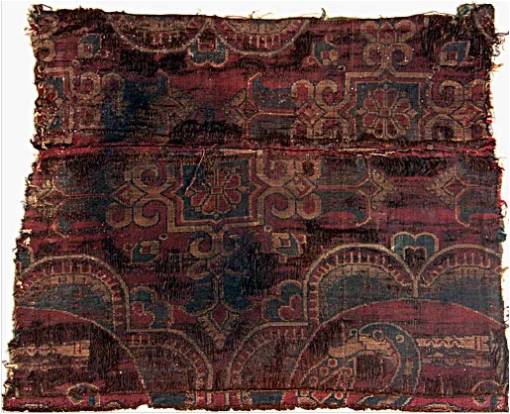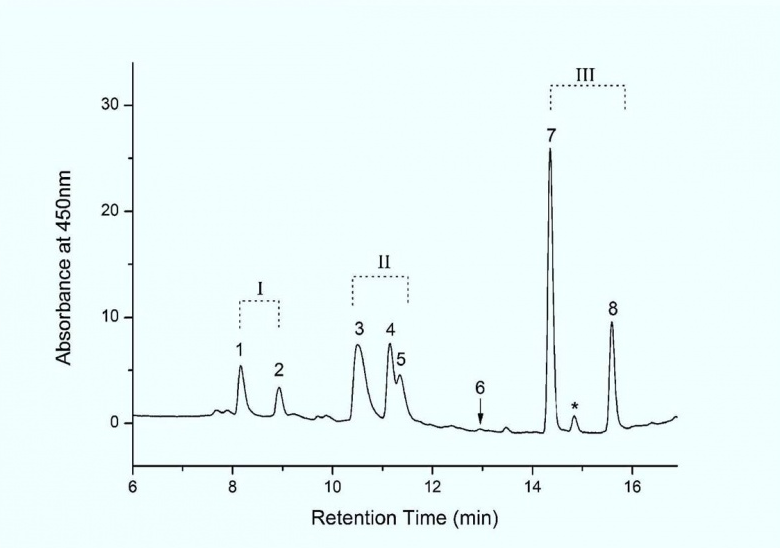Difference between revisions of "XIA 95BYYM15:3&4, Woolen robe and Embroidered trousers, China (Jin Dynasty, 265-430 CE)"
| Line 4: | Line 4: | ||
Xinjiang Institute of Archaeology, 95BYYM15:3 Woolen robe with figures and animals. | Xinjiang Institute of Archaeology, 95BYYM15:3 Woolen robe with figures and animals. | ||
| + | |||
Xinjiang Institute of Archaeology, 95BYYM15:4 Embroidered trousers with a cross pattern. | Xinjiang Institute of Archaeology, 95BYYM15:4 Embroidered trousers with a cross pattern. | ||
Revision as of 13:12, 8 September 2017
Artifact Information
A male mummy (Yingpan man) (tomb No. 5) was discovered in Yingpan, Xinjiang by archaeologists of Xinjiang Institute of Archaeology [1]. The costume mainly includes a fine red woolen robe and an embroidered trousers. The robe was made of wool. The patterns of the robe shows the character and poses of nude putti. The robe patterns also have representations of goats and cattle with pomegranate trees standing between them [2].
Xinjiang Institute of Archaeology, 95BYYM15:3 Woolen robe with figures and animals.
Xinjiang Institute of Archaeology, 95BYYM15:4 Embroidered trousers with a cross pattern.
Analytical instrumentation and procedures
The dye was extracted from a thread (0.2-1mg) of the archaeological object in a solution of pyridine/water/1.0M oxalic acid as described by Mouri and Laursen [2]. The solution was evaporated to dryness under a nitrogen flow, and redissolved in 50 μL MeOH/H2O (1/1); subsequently, 20 μL of dye solution was injected onto HPLC column.
An extract was analyzed on an HPLC-PDA-MS system consisting of a Shimadzu LC-20A high performance liquid chromatography, a Shimadzu SPD-M20A photodiode array detector and a Thermo LTQ XL ion trap mass spectrometer. The separation was performed on a Shim-pack XR-ODS column (3.0 mm × 75 mm, 2.2-μm particle size) and a Phenomenex Luna C18 column (2.0 mm × 150 mm, 3-μm particle size). Columns were eluted with acetonitrile-water gradients containing 0.1% formic acid at a flow rate of 0.3 mL/min.
Summary of results
A mixture of carmine scale insects, lac and madder was identified for red dye. Crimson dye contained tannins, carminic acid, alizarin and purpurin. Blue dye was obtained from indigo plant.
Editor's note: The identification of carminic acid and usage of multiple red dye sources in one pieces was quite unique. The author is open to further discussion and would like to do collaborative work with institutions that have done similar research or have access to similar objects.
HPLC profile
References
[1] [1] Xu X. Studies of samite with birds from Tibetan Tombs in Dulan of Qinghai. China Tibetology 1996; 1: 3-26.
[2] Richard A. Laursen and Chika Mouri "Decomposition and analysis of cathamin in safflower-dyed textiles", e-Preservation Science 2013, 10, 35-37.


